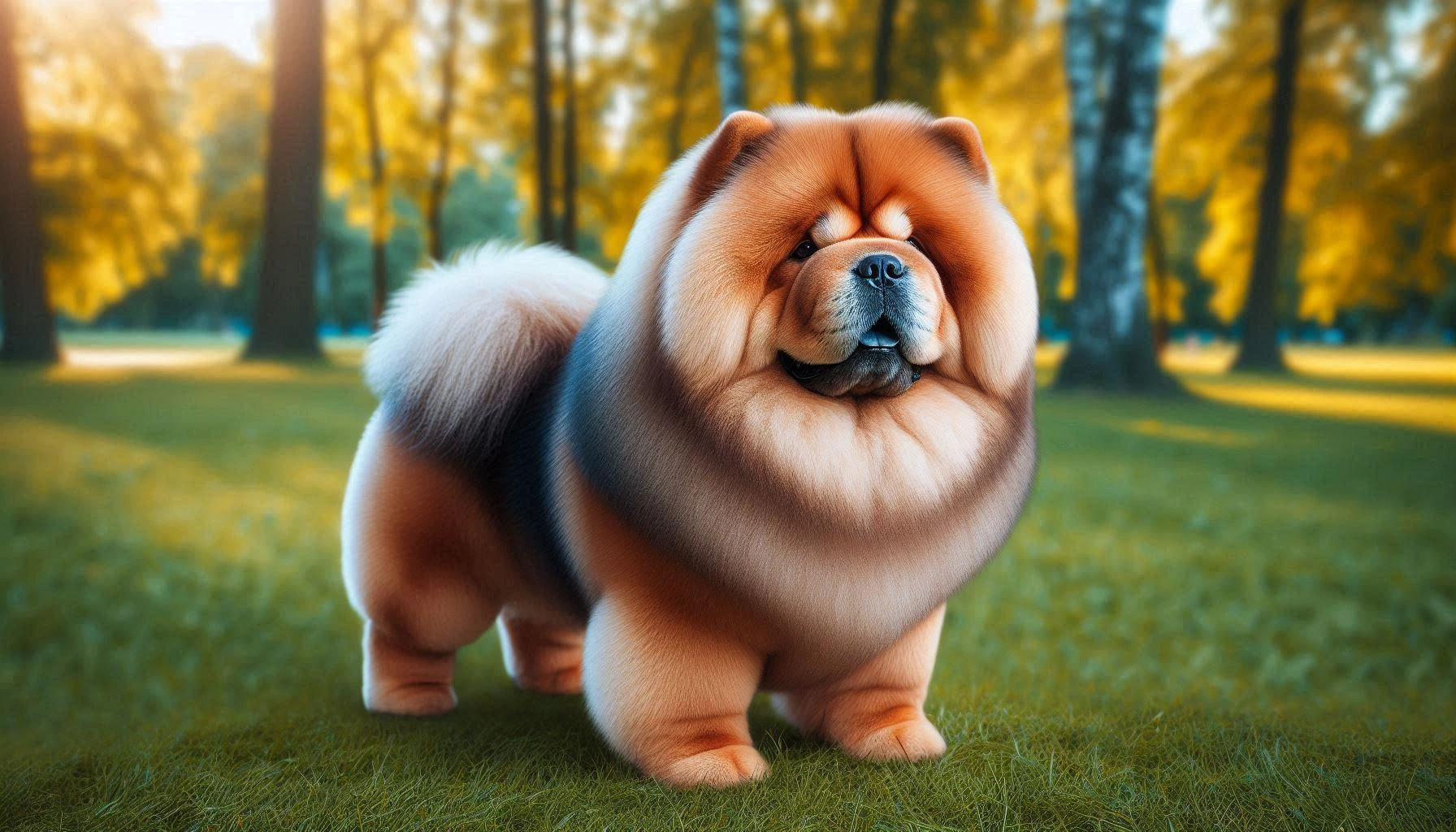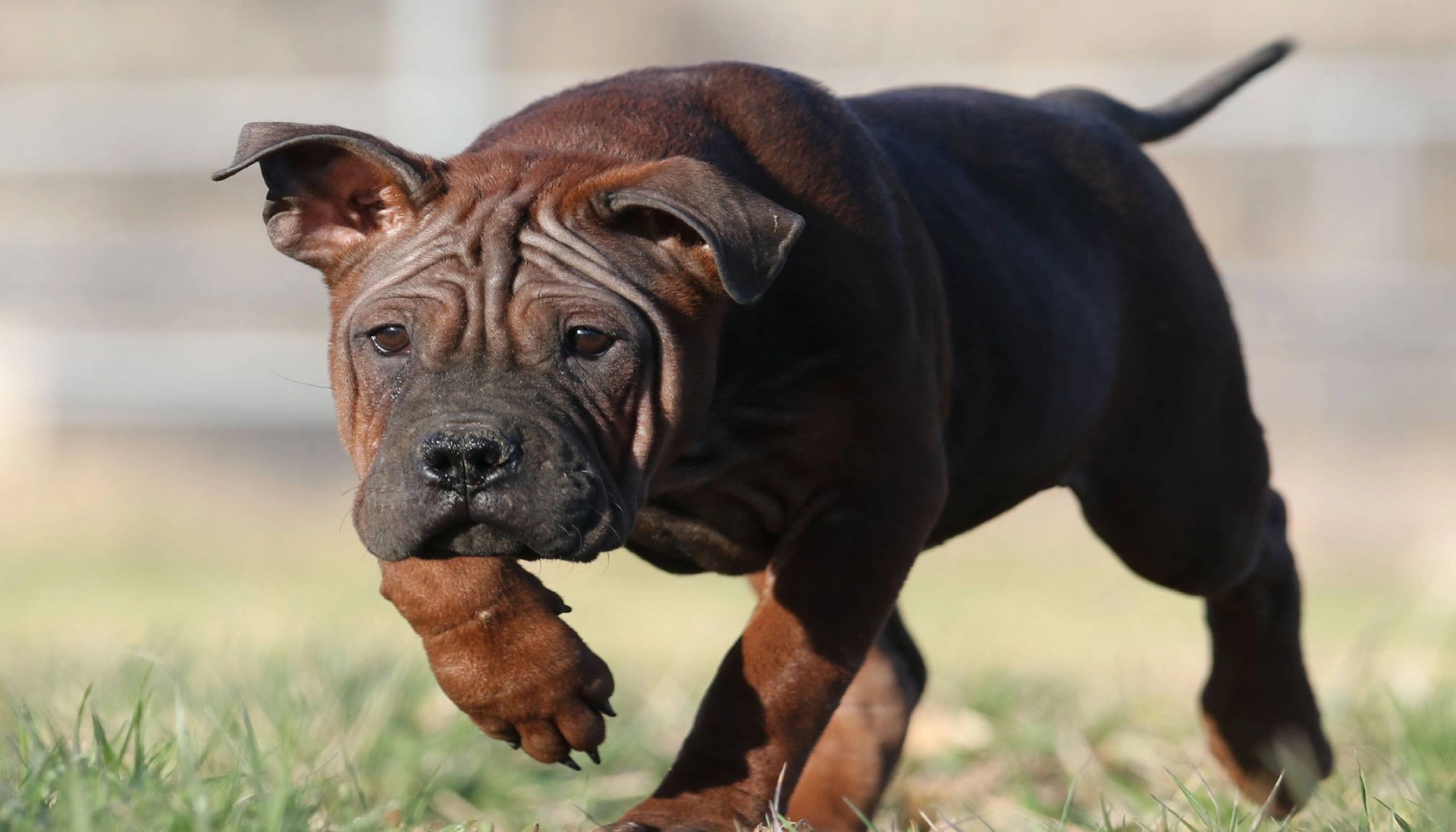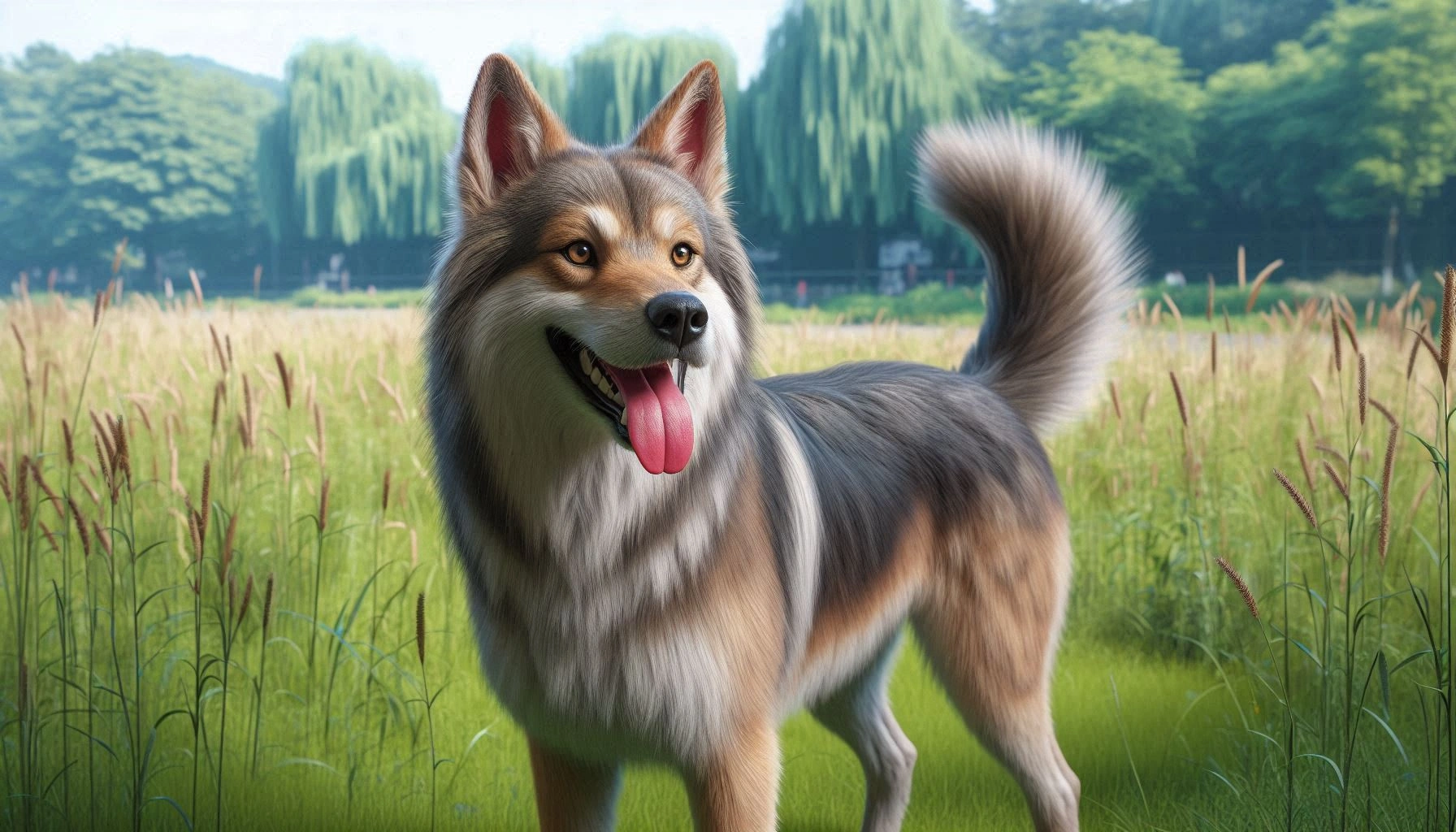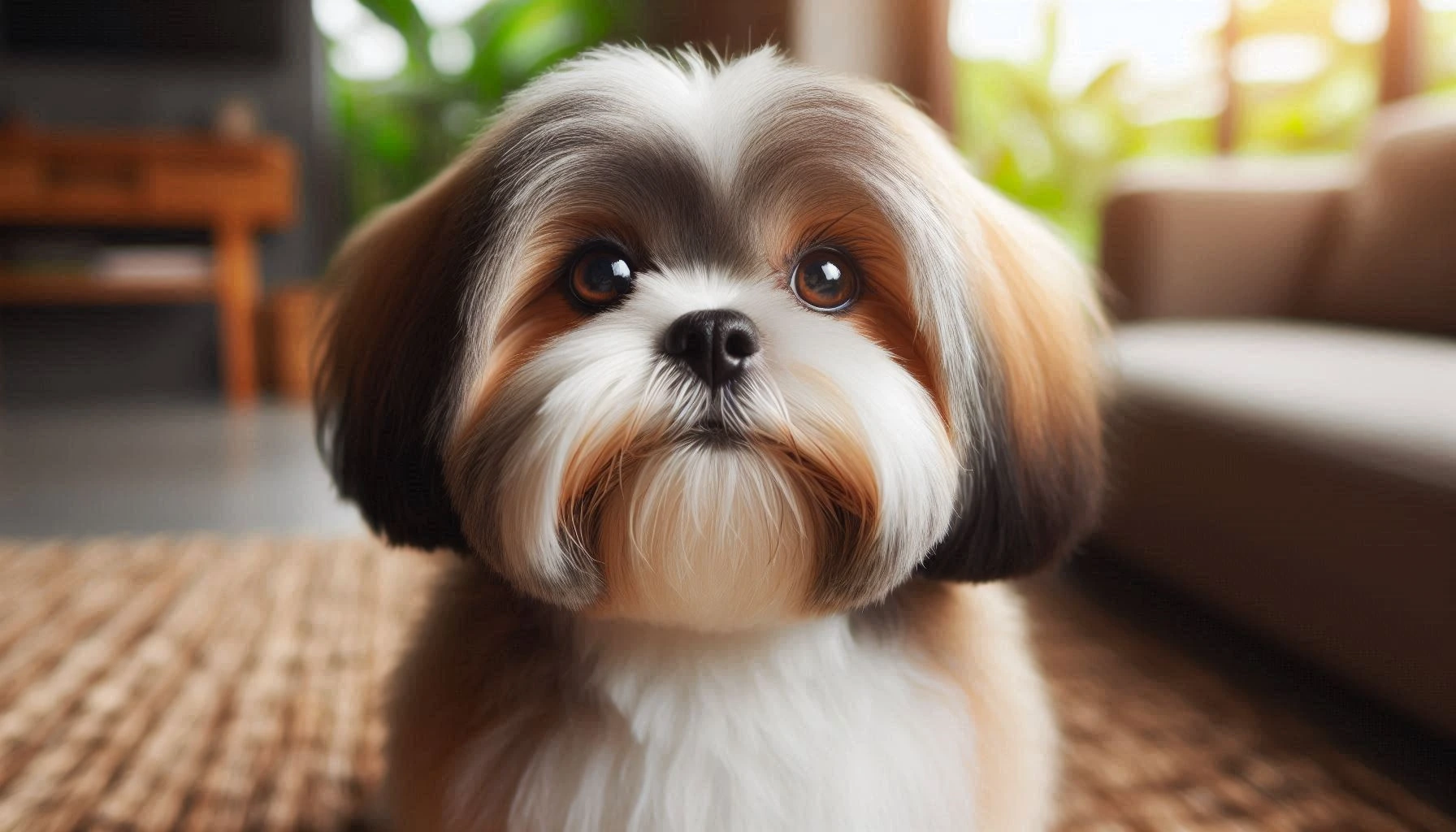Table of Contents
Pug Dog Breed
The Pug dog breed is one of the most beloved and recognizable in the canine world. Known for their distinctive wrinkled faces, big round eyes, and curly tails, Pugs are small yet sturdy dogs that pack a lot of personality into their compact frames. These dogs have a unique charm that has endeared them to dog lovers for centuries. Whether you’re looking for a loyal companion or a playful family pet, the Pug’s affectionate nature and quirky antics make it a popular choice among dog owners.
History and Origin
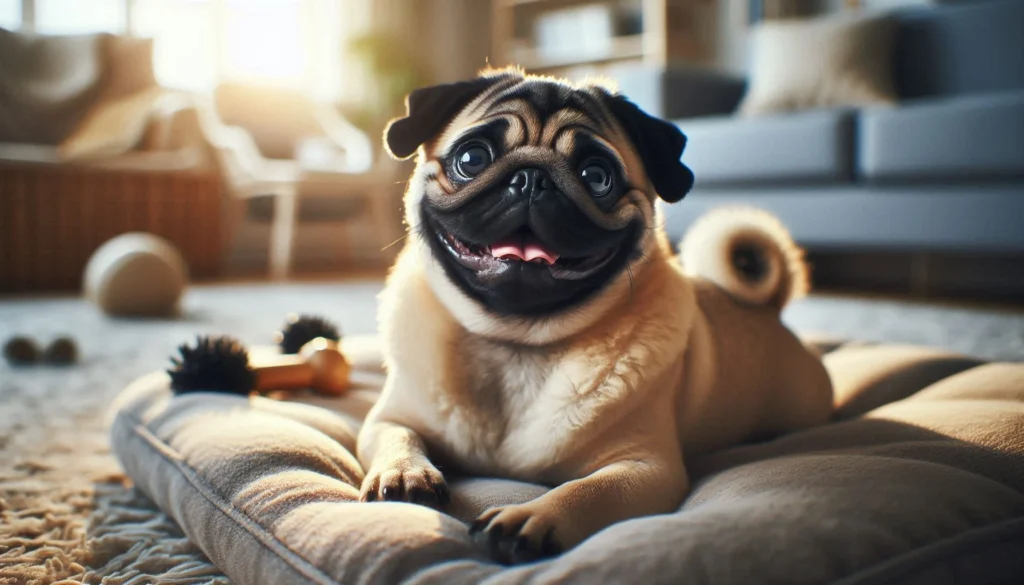
The Ancient Roots of the Pug
The history of the Pug dog breed is as rich and intriguing as its appearance. Originating in China over 2,000 years ago, Pugs were bred as companion animals for Chinese emperors. These little dogs were highly prized in the royal courts, where they were pampered and revered. The breed’s ancient name, “Lo-sze,” reflects its esteemed status in Chinese culture.
In the 16th and 17th centuries, Pugs made their way to Europe, thanks to Dutch traders who brought them from the Far East. The breed quickly became a favorite among European nobility. In the Netherlands, the Pug was the official dog of the House of Orange after a Pug reportedly saved the life of Prince William of Orange by alerting him to approaching assassins. The breed continued to enjoy royal favor across Europe, particularly in England, where Queen Victoria’s passion for Pugs led to their popularity soaring in the 19th century.
Physical Characteristics
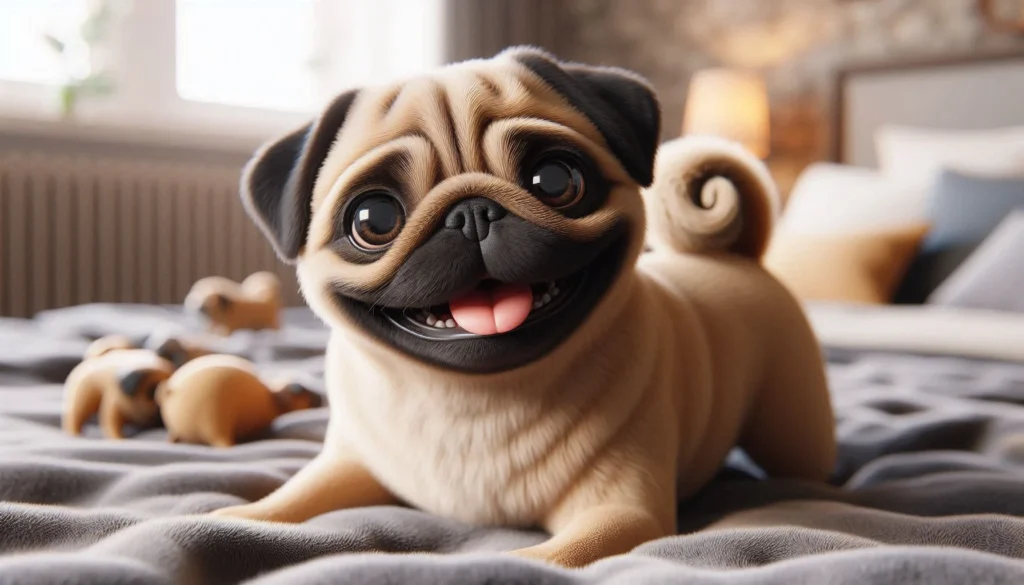
What Does a Pug Look Like?
Pugs are small, compact dogs with a well-muscled body and a square, stocky build. Despite their small size, they have a solid and sturdy frame. Here are some key physical characteristics of the Pug dog breed:
- Size: Pugs typically stand between 10 to 13 inches tall at the shoulder and weigh between 14 to 18 pounds.
- Coat Type: They have a short, smooth, and glossy coat that is easy to maintain.
- Colors: Pugs come in a variety of colors, the most common being fawn, black, apricot, and silver. Fawn Pugs often have a distinctive black mask.
- Distinctive Features: Pugs are famous for their wrinkled foreheads, large expressive eyes, and tightly curled tails that sit high on their backs.
Their facial wrinkles are particularly notable, often described as conveying an expression of concern or curiosity. These wrinkles, combined with their big eyes and snub-nosed faces, give Pugs their signature look that many find irresistible.
Temperament and Personality
The Lovable Pug Personality
Pugs are known for their affectionate and gentle nature. They are social dogs that thrive on human companionship and enjoy being the center of attention. Here’s what you can expect from a Pug’s temperament:
- Affectionate: Pugs are incredibly loving and form strong bonds with their owners. They are known to follow their humans from room to room, just to be near them.
- Playful: Despite their small size, Pugs have a playful streak. They love to engage in games and can be quite silly, making them great entertainment for families.
- Sociable: Pugs get along well with children, other dogs, and even cats. They are friendly and rarely aggressive, making them excellent pets for families of all sizes.
- Calm: While Pugs are playful, they also have a laid-back side. They are perfectly content to snuggle on the couch and take a nap, making them great companions for people who prefer a more relaxed lifestyle.
One of the most endearing traits of Pugs is their ability to make their owners laugh. Their expressive faces, combined with their love for play, result in plenty of amusing moments.
Health and Lifespan
Common Health Issues in Pugs
Pugs, like all breeds, have specific health issues that potential owners should be aware of. The average lifespan of a Pug is between 12 to 15 years, but maintaining their health requires some attention to their unique needs:
- Brachycephalic Syndrome: Due to their flat faces, Pugs are prone to respiratory issues, a condition known as brachycephalic syndrome. This can make them susceptible to overheating, especially in hot weather.
- Eye Conditions: Pugs have large, prominent eyes, which makes them prone to eye injuries and conditions such as corneal ulcers and dry eye.
- Hip Dysplasia: Although more common in larger breeds, Pugs can also suffer from hip dysplasia, leading to discomfort and mobility issues.
- Obesity: Pugs love food and can easily become overweight if not properly managed. Obesity can exacerbate respiratory issues and lead to other health problems.
Tips for Keeping Your Pug Healthy
To ensure a long and healthy life for your Pug, consider the following tips:
- Regular Vet Checkups: Regular veterinary visits can help catch and manage health issues early.
- Balanced Diet: Feed your Pug a balanced diet appropriate for their age and activity level, and monitor their weight closely.
- Exercise: While Pugs don’t require extensive exercise, regular walks and playtime are essential to keep them fit and healthy.
- Cool Environment: Keep your Pug in a cool, well-ventilated environment, especially during the summer months, to prevent overheating.
Care and Grooming
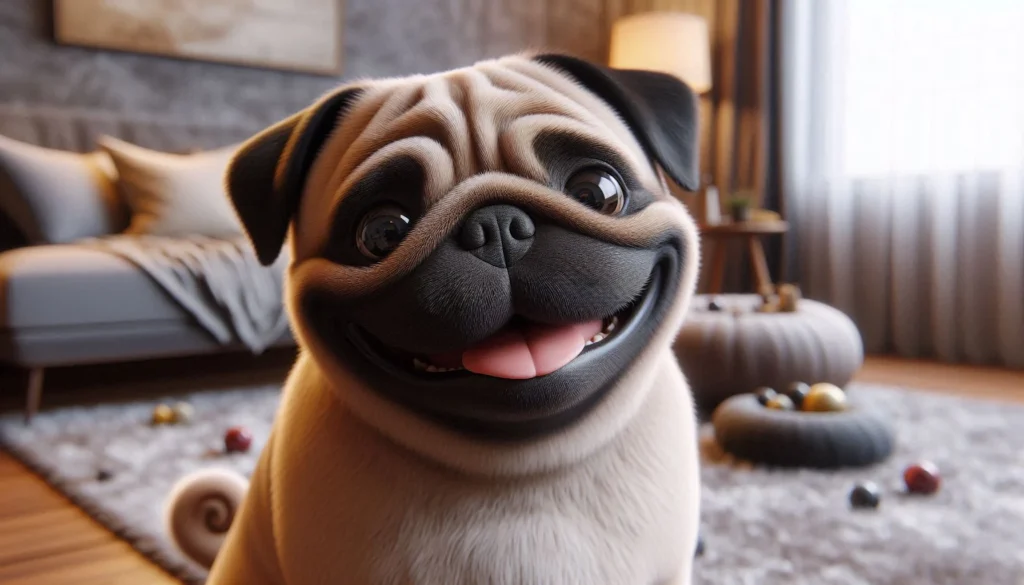
Grooming Your Pug
Pugs are relatively low-maintenance when it comes to grooming, but they do require some regular care:
- Brushing: Although Pugs have short coats, they are moderate shedders. Brushing them once or twice a week can help reduce shedding and keep their coat shiny.
- Wrinkle Cleaning: The folds in a Pug’s face can trap moisture and debris, leading to infections. Regularly clean and dry these areas to prevent irritation.
- Nail Trimming: Pugs’ nails grow quickly and should be trimmed regularly to prevent discomfort.
- Bathing: Bathing your Pug every few months is usually sufficient unless they get particularly dirty. Use a gentle dog shampoo to avoid skin irritation.
Exercise Needs
Pugs are not overly energetic, but they do need daily exercise to prevent obesity and keep them healthy:
- Walks: A couple of short walks each day, combined with some indoor play, should be enough to keep your Pug in good shape.
- Playtime: Pugs enjoy playtime, whether it’s chasing a toy around the house or a game of fetch in the yard.
Dietary Recommendations
A balanced diet is crucial for maintaining your Pug’s health:
- Portion Control: Because Pugs are prone to obesity, it’s important to feed them the correct portions and avoid overfeeding.
- Quality Food: Choose high-quality dog food that meets their nutritional needs. Look for formulas that are appropriate for small breeds.
Training and Socialization
Training a Pug
Pugs are intelligent dogs, but they can be a bit stubborn, which can make training a challenge:
- Positive Reinforcement: Use positive reinforcement techniques, such as treats and praise, to motivate your Pug during training sessions.
- Consistency: Be consistent with commands and routines to help your Pug learn more effectively.
- Patience: Pugs can be slow learners, so patience is key. Short, frequent training sessions are often more effective than long ones.
Socializing Your Pug
Socialization is important for all dogs, including Pugs:
- Early Socialization: Introduce your Pug to different people, animals, and environments from a young age to help them become well-adjusted adults.
- Positive Experiences: Ensure that socialization experiences are positive to build your Pug’s confidence.
Suitability as a Family Pet
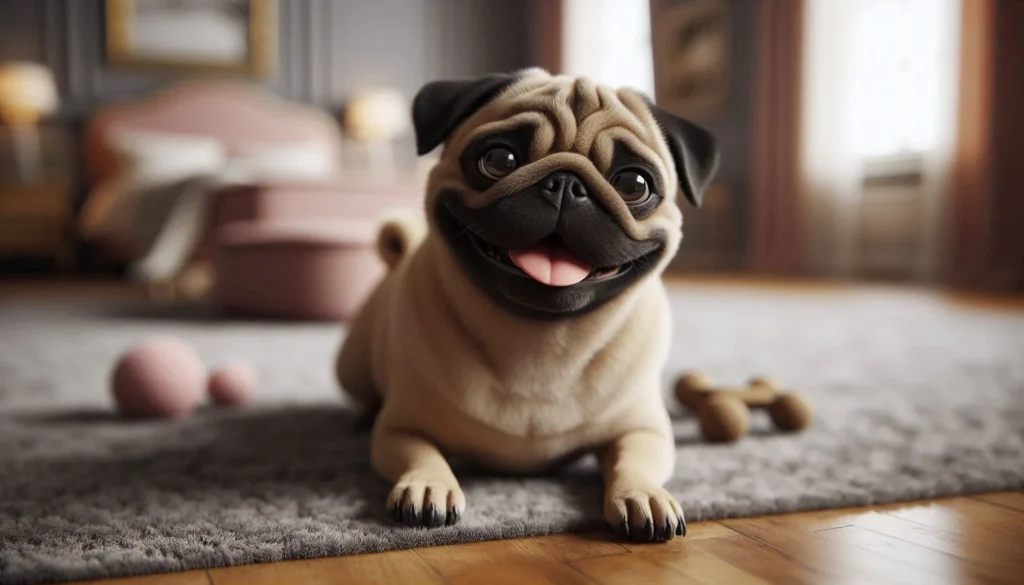
Is a Pug the Right Pet for Your Family?
Pugs are excellent family pets for a variety of reasons:
- Adaptable: Pugs are adaptable and can live comfortably in both apartments and houses. They do not need a lot of space as long as they get their daily exercise.
- Good with Children: Their gentle and playful nature makes Pugs great companions for children. They are patient and enjoy the company of kids.
- Low Energy: Pugs are not overly energetic, which makes them a good fit for families who prefer a more relaxed pet.
However, potential owners should be aware of their health needs and the care required to keep them healthy and happy.
Fun Facts and Trivia
- Royal Connections: Pugs have been pets of royalty in multiple countries, including China, the Netherlands, and England.
- Multilingual: The breed’s name comes from the Latin word “pugnus,” meaning “fist,” because the Pug’s face resembles a clenched fist.
- Celebrities’ Favorite: Many celebrities, including Gerard Butler, Hugh Laurie, and Jessica Alba, have owned Pugs, contributing to the breed’s popularity.
Dog Breeds Similar to Pug Dog
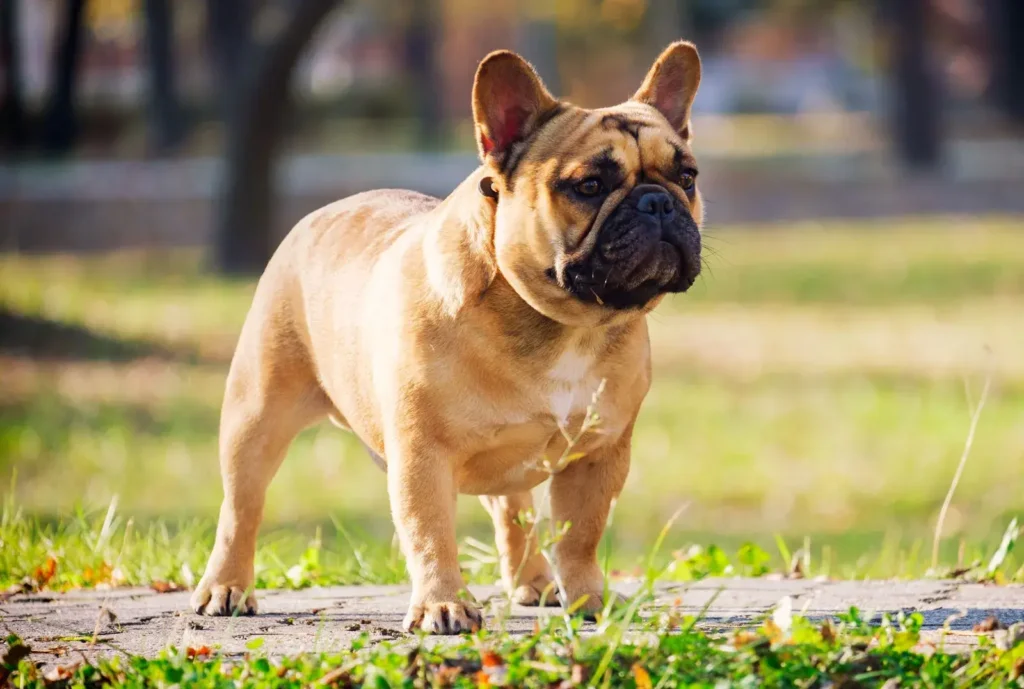

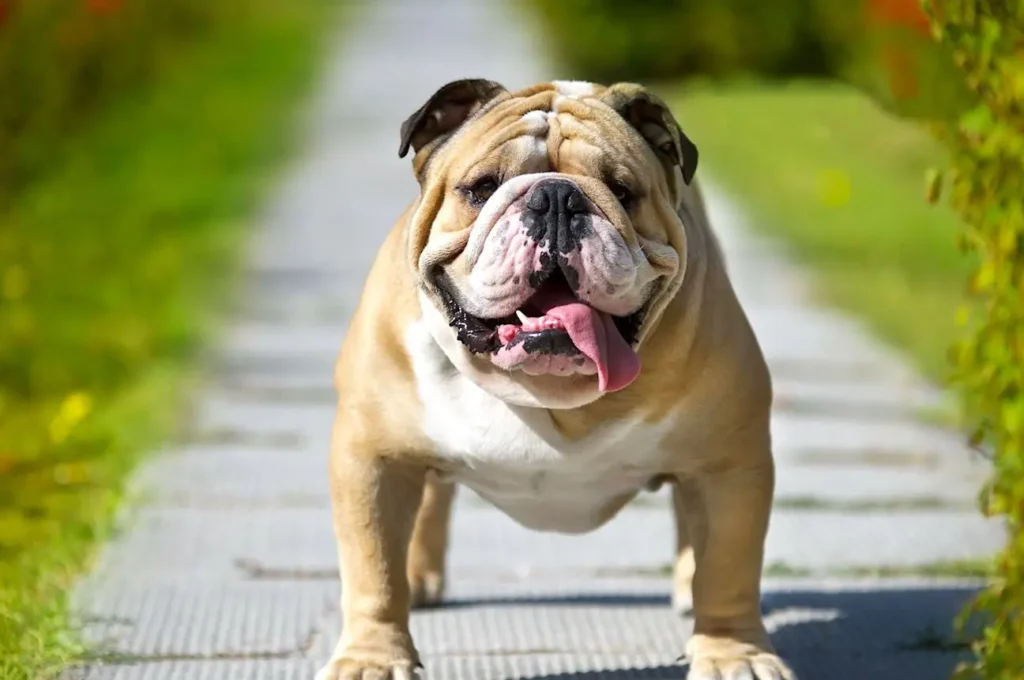
1. French Bulldog
French Bulldogs are similar to Pugs in size and personality. They have a compact build, short snout, and bat-like ears. Like Pugs, they are affectionate, love attention, and have a playful nature, making them excellent companions.
2. Boston Terrier
Boston Terriers share the Pug’s small size and friendly disposition. They are known for their tuxedo-like coat markings and are often referred to as “American Gentlemen.” They are intelligent, easy to train, and get along well with families and other pets.
3. Bulldog
Bulldogs, although larger than Pugs, share similar physical traits, such as a wrinkled face and a stocky build. They are known for their calm demeanor, making them great pets for families who want a loyal and low-energy dog.
Conclusion
The Pug dog breed is a delightful and endearing companion, known for its loving nature and charming personality. With a rich history and a strong bond with humans, Pugs make excellent family pets for those who are willing to meet their health and care needs. If you’re considering adding a Pug to your family, you’ll be rewarded with a loyal and affectionate friend who brings joy and laughter into your life.
FAQ
Is a Pug a dangerous dog?
No, Pugs are not dangerous dogs. They are known for their friendly and gentle nature. Pugs are great with people, including children, and typically get along well with other pets.
Is a Pug the best guard dog to protect your family?
Pugs are not ideal guard dogs due to their small size and friendly disposition. While they may bark to alert you of strangers, they are more likely to greet visitors with enthusiasm than to ward them off. Pugs are better suited as loving companions rather than protectors.
